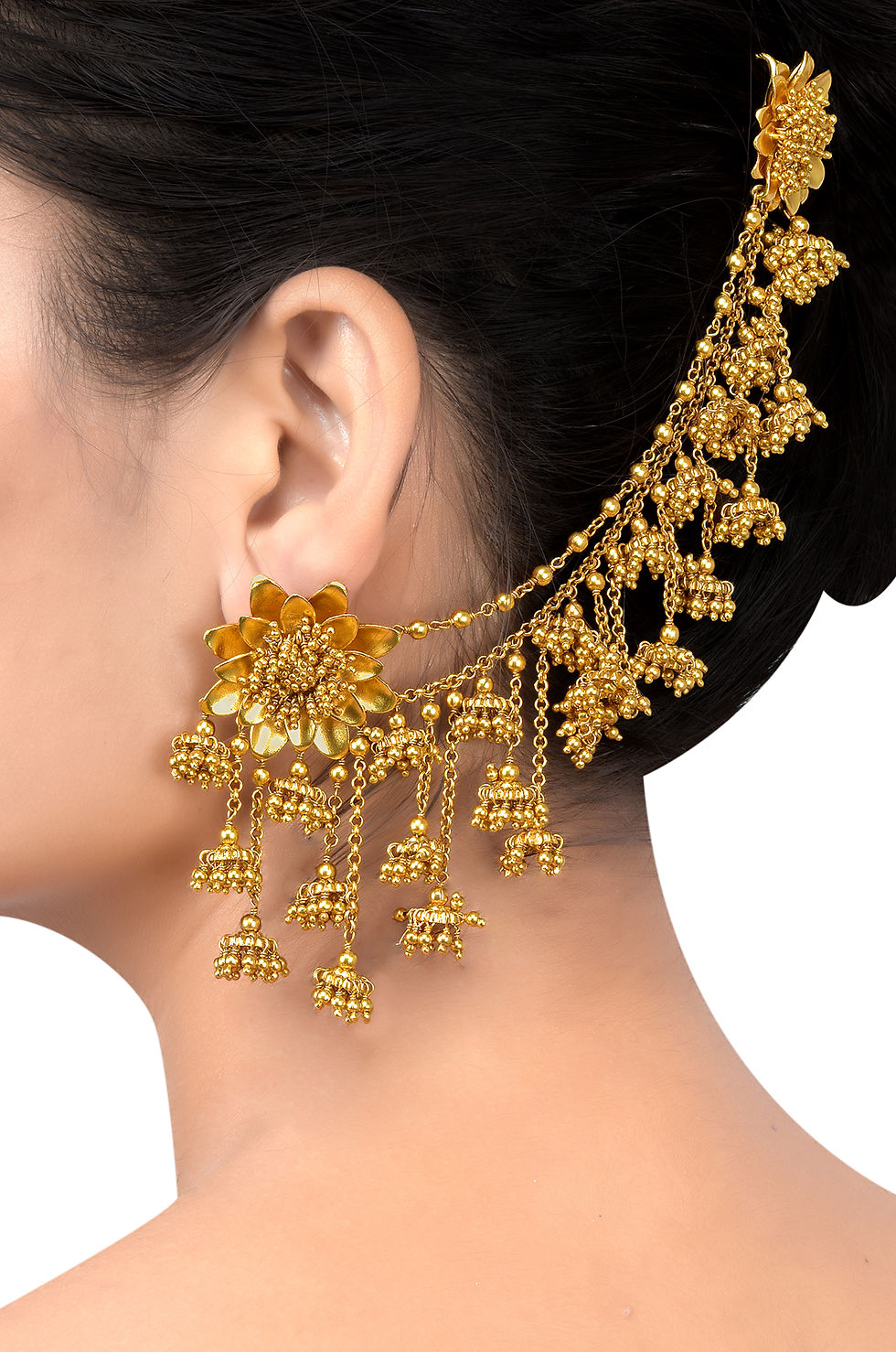Conserving the Rich Ethnic Heritage of Traditional Indian native Jewellery
- advika
- Mar 29, 2023
- 3 min read
Conventional Indian native jewellery is famous around the world for its sophisticated designs, superb craftsmanship, as well as ethnic significance. From the straightforward bead necklaces of ancient times to the ornate gold and also gemstone sets of the Mughal era, Indian native jewellery possesses a vibrant heritage that spans many thousands of years.

The very first recognized examples of Indian native jewellery date back to the Indus Valley Civilisation, that flourished around 2500 BCE. Archaeological excavations currently have exposed bead necklaces, bangles, and also earrings manufactured from a variety of materials like shells, stones, and ivory. These kinds of pieces were often utilized for religious and also ceremonial purposes, and many were thought to have protective powers. Know more in detail about Tribe Earrings.
Over the generations, Native indian jewellery developed both in design and materials. The Mauryan Kingdom, which ruled from the 3rd century BCE to the 3rd century CE, saw the introduction of priceless metals like gold and silver, and also the use of gemstones like diamonds, rubies, in addition to emeralds. During the Mughal era (1526-1857), Native indian pieces of jewelry reached new levels of opulence as well as refinement. The Mughal emperors were actually known for their passion for fine pieces of jewelry and commissioned artists to produce intricate pieces that indicated their success plus power.
One of the most famous kinds of traditional Indian jewellery is Kundan. This style began in Rajasthan during the Mughal period and will be characterised by the use of gold or silver foil to develop a foundation for setting precious stones. The stones are usually held in place by a network of gold or silver wires, and the result is a wonderful piece that shimmers in the light. Kundan jewellery can be often donned by brides on their wedding day and will be considered a symbol of purity as well as prosperity.
One other popular style of conventional Indian jewellery is Jadau. This particular type of jewellery is actually characterised by the use of uncut or rough diamonds, generally known as polki, set in a fragile frame of gold or silver. Jadau jewellery originated in the Mughal period and is often put on by women during special events such as weddings and festivals. The complicated stone setting of Jadau jewellery demands excellent ability and precision and can be considered a testament to the artisan’s design.
Meenakari can be another kind of traditional Indian jewellery that well known for its attractive colours as well as sophisticated designs. Meenakari entails the application of colored enamel to the surface of gold or silver jewellery, creating a amazing effect. The enamel is typically applied in a series of layers, with every coating being fired in a kiln to produce a tough finish. Meenakari jewellery can be often characterised by its use of floral and also bird motifs and is often used by women during celebrations as well as special occasions.

In Indian culture, jewellery is more than simply a fashion accessory – it also has great cultural and spiritual importance. Many types of conventional Indian jewellery are believed to have protective or therapeutic powers and are often used for these kinds of reasons. For example, the Mangalsutra is actually a type of necklace that is donned by married females as a sign of their marriage status. It is actually believed to safeguard the husband’s life as well as bring good fortune to the family members. Know more in detail about Three Layer Gold Chain.
Native indian jewellery is also often associated with religious as well as spiritual beliefs. Temple jewellery, for example, is actually a type of conventional Indian jewellery that is often worn by dancers during temple rituals. It is actually characterised by its use of intricate designs as well as motifs, such as the lotus flower and also the peacock, which have great religious significance in Hinduism.<br>




Comments